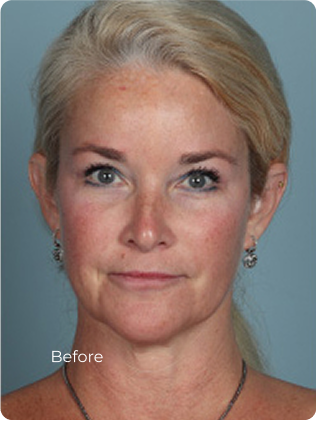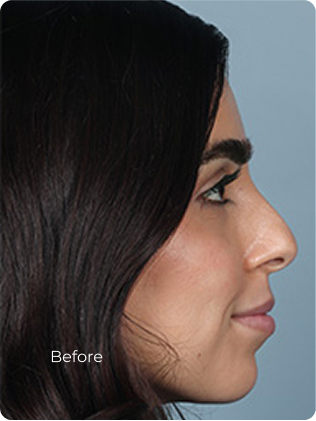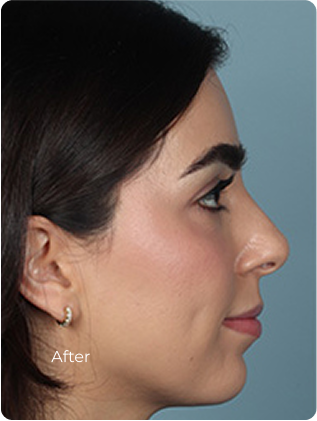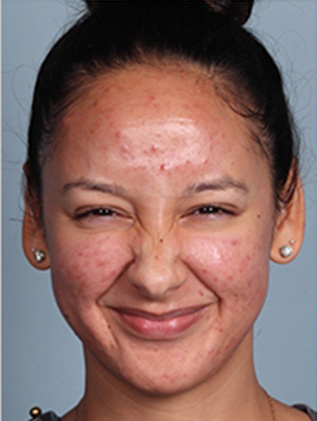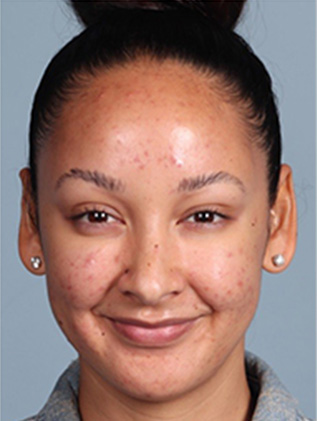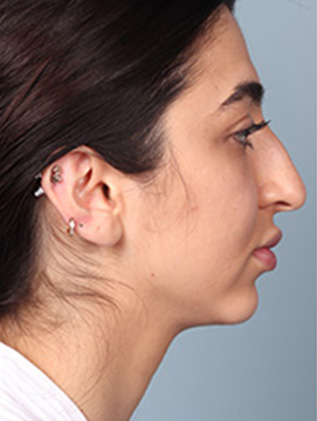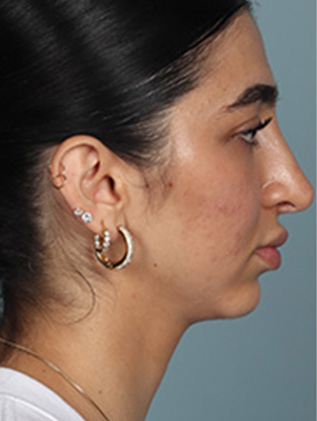One of the most popular types of facelifts today is the deep plane facelift. A deep plane facelift is unique in the way that it addresses the underlying muscle and connective tissue of the face. This network of smaller muscles and connective tissues, called the SMAS (Superficial Musculoaponeurotic System) forms the underlying structure and framework of the face.
A deep plane facelift tightens the SMAS, and also releases the four ligaments in the lower part of the face that anchor the facial muscles, pulling them downward. When the ligaments are released, a beautiful, lifted effect is achieved that appears naturally youthful.
Of the many benefits, a deep plane facelift provides, a shorter recovery period is one of them. The recovery period after a deep plane facelift is short enough that is it comparable to that of a mini facelift.

Why is the recovery period after a deep plane facelift shorter?
A deep plane facelift causes less trauma than a traditional facelift. Most of the surgical work is performed on the SMAS, the deeper tissue layers of the face, rather than the tissues near the surface.
The skin is not separated from the underlying lymphatic glands. This separation, which is common to most other facelift procedures, is a major factor in the cause of the extensive swelling patients typically experience after a facelift.
With a deep plane facelift, there is little tension on the skin once it is complete. This facelift leaves no lumpy red or stretched scars. The lack of skin tension results in a faster healing period for the incisions, and a better healing experience.
What will the recovery be like after a deep plane facelift with Dr. Macias?
You’ll be able to return home with a family member or close friend after your deep plane facelift is complete and the anesthesia wears off. You will have a compression garment and neck support for about one week. There will be swelling and bruising, which will begin to subside after several days.
Any drains that were placed will be removed after seven days. After about ten days, most patients are able to return to light activities and sedentary work. Wait for 4-6 weeks to return to strenuous exercise.

Your facelift with Dr. Macias–customized to your precise needs
Dr. Luis Macias is an acknowledged expert in his field, specializing in procedures such as the deep plane facelift. As a plastic surgeon whose focus is on natural, elegant results, he also specializes in other facelift procedures, such as the mini facelift and the vertical lift. The mini facelift is a less invasive procedure that addresses earlier signs of age, resulting in a dramatic change with a short recovery period.
The vertical lift specifically addresses sagging skin on the jawline and under the chin, sculpting the lower third of the face. A vertical facelift achieves sculpted definition and a more youthful, balanced, and natural-looking appearance. Even better, a vertical facelift requires smaller incisions–resulting in minimal scarring after the surgery.
Dr. Macias’ expertise and credentials
If you’re looking for safe, advanced techniques, long experience, outstanding expertise, and beautiful, natural-looking results, Dr. Luis Macias is an ideal choice.
Dr. Macias is an internationally renowned, double board-certified plastic surgeon whose reputation for natural, elegant results is well known. He provides state-of-the-art, compassionate, and professional care, from your first consultation through the end of your recovery period. Dr. Macias stays abreast of the latest, modern techniques to ensure his patients always receive the very best.
His additional credentials include the following:
Memberships:
- International Society of Aesthetic Plastic Surgery (ISAPS)
- American Society for Aesthetic Plastic Surgery (ASAPS)
- American Society of Plastic Surgeons (ASPS)
- California Society of Plastic Surgeons(CSPS)
- Los Angeles Society of Plastic Surgeons (LASPS)
- The Rhinoplasty Society
- Fellow of the American College of Surgeons (FACS)
Further credentials:
As the Aesthetic Program Director at the University of Southern California (USC) Keck School of Medicine Division of Plastic and Reconstructive Surgery, Dr. Macias teaches residents and fellows advanced aesthetic plastic surgery techniques and procedures.
Please call today for a consultation about your facelift with Dr. Macias.
